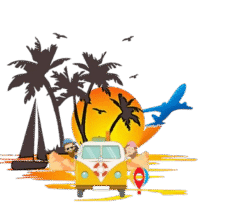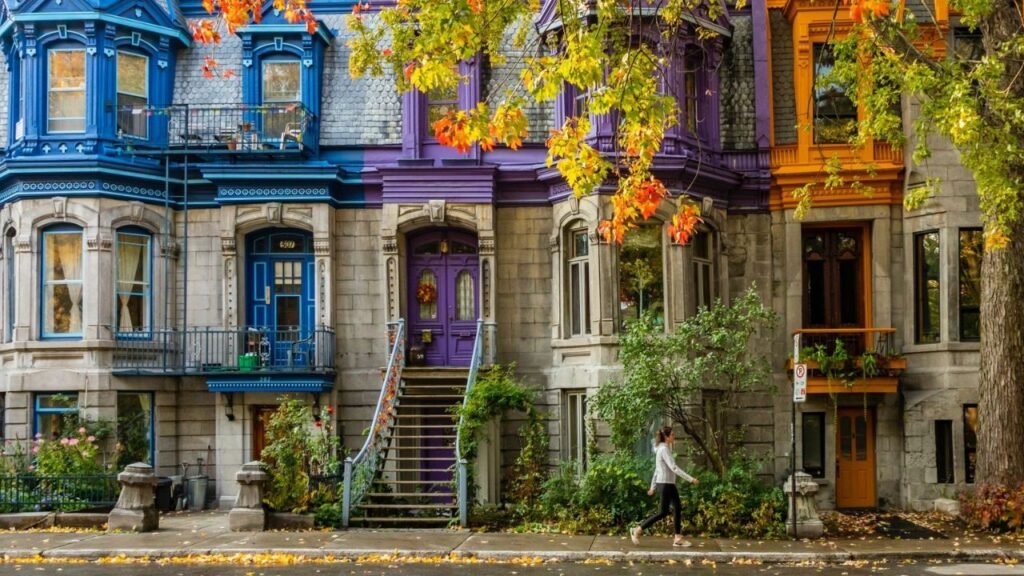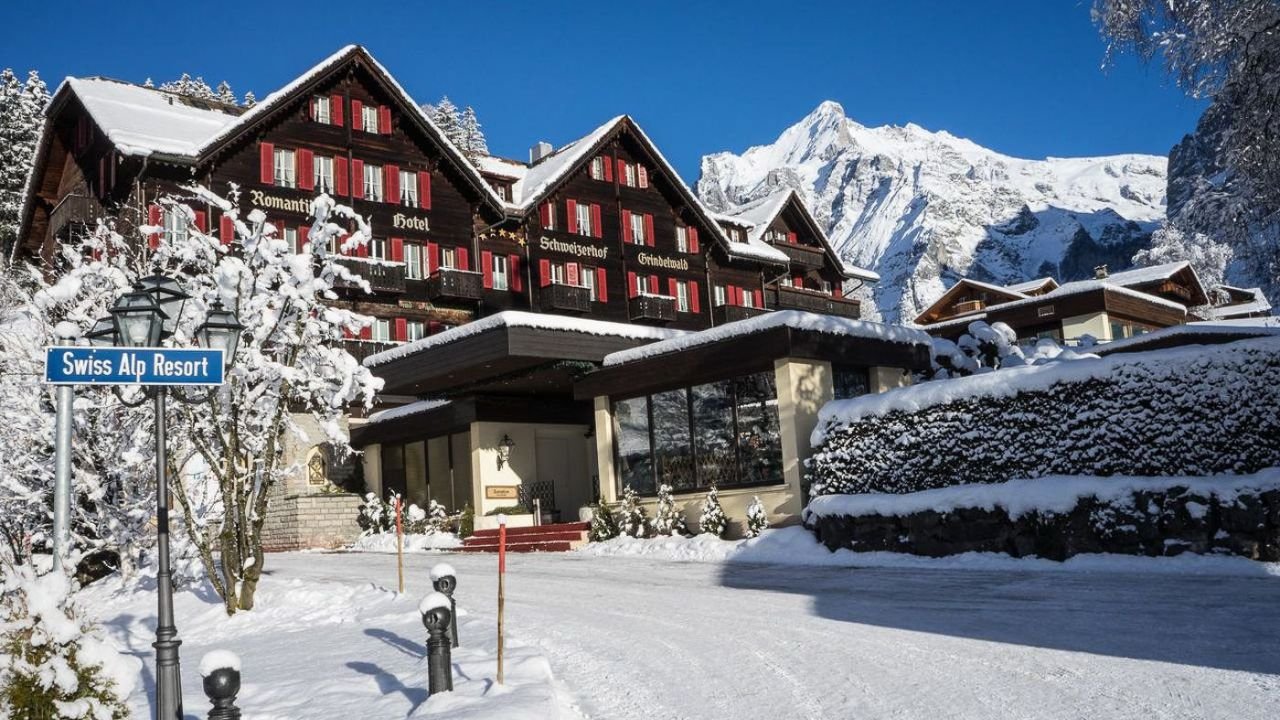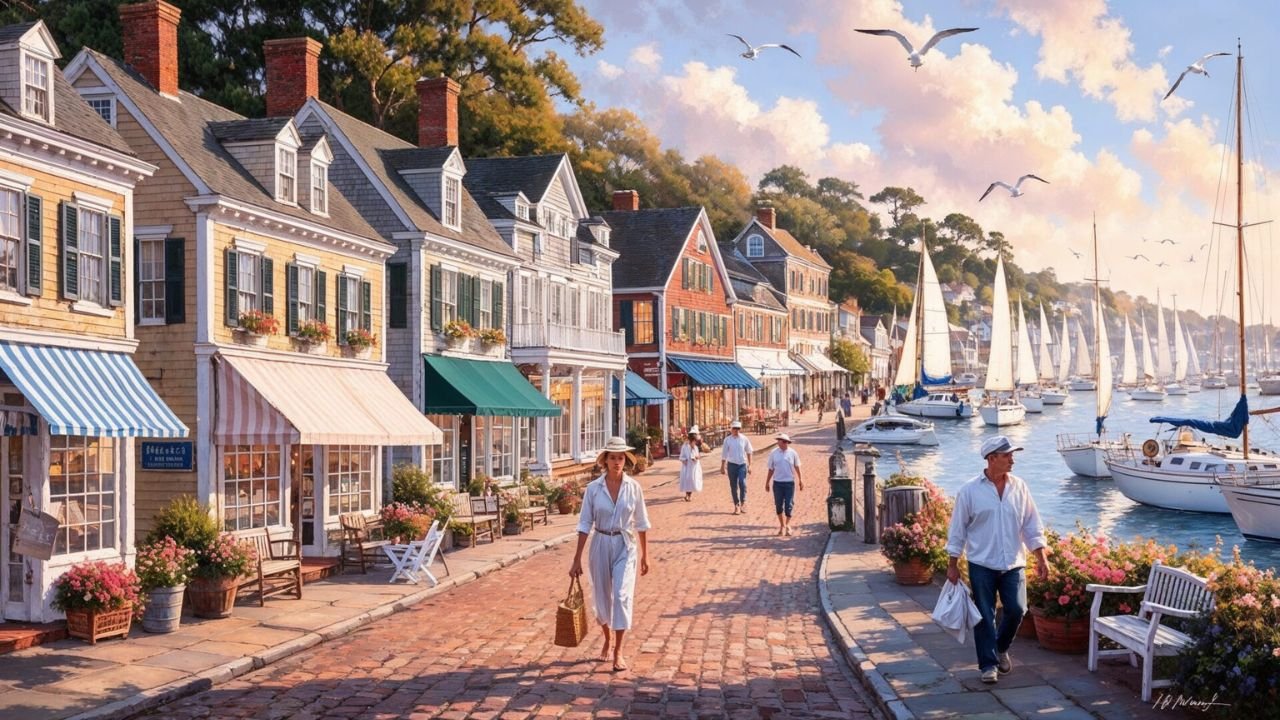Introduction
Montreal is a city that embodies a fascinating blend of North American innovation and European charm. Its rich history, diverse neighborhoods, vibrant arts scene, and renowned culinary culture make it a must-visit destination for travelers seeking both cultural enrichment and urban excitement. Whether you’re a history buff, a foodie, an outdoor enthusiast, or someone looking to experience lively festivals, Montreal has something for everyone.
This comprehensive guide explores the 18 best activities and attractions that showcase the city’s unique character. From wandering through historic Old Montreal to hiking in lush parks, sampling world-class cuisine, and experiencing lively festivals, you will find a wealth of options to craft an unforgettable trip.
1. Explore Old Montreal (Vieux-Montréal)
Why Visit:
Old Montreal is the historic heart of the city, a charming district where centuries-old architecture, cobblestone streets, and European ambiance create an enchanting atmosphere. It’s the perfect place to start your journey, soaking in the city’s roots and vibrant street life.
Highlights:
- Notre-Dame Basilica: This Gothic Revival masterpiece is one of Montreal’s most iconic landmarks. Its stunning interior features intricate woodwork, stained glass, and a mesmerizing light show that illuminates its architectural splendor. Don’t miss the evening light projection that brings the church to life.
- Place Jacques-Cartier: The bustling square is lined with cafes, street performers, and historic buildings. It’s a lively gathering spot where you can enjoy people-watching and soak in the local vibe.
- Old Port (Vieux-Port): Stretching along the St. Lawrence River, the Old Port offers a variety of recreational options, including boat cruises, kayaking, paddleboarding, and zip-lining. During summer, the area hosts festivals, outdoor markets, and concerts.
- Château Ramezay and the Montreal Museum of Archaeology and History: These museums provide insights into the city’s past with fascinating exhibits, artifacts, and interactive displays.
- Historic Streets & Hidden Gems: Wander through Rue Saint-Paul, the oldest street in Montreal, lined with art galleries, antique shops, and cafes. Discover secret courtyards, quaint boutiques, and street art murals that give Old Montreal its timeless charm.
Tips:
- Visit early in the morning or late in the evening to avoid crowds.
- Take a guided walking tour to learn about the city’s history and architecture.
- Explore the surrounding neighborhoods to find tucked-away cafes and artisan shops.
2. Climb Mount Royal for Panoramic Views
Why Visit:
Designed by Frederick Law Olmsted, the landscape architect behind Central Park, Mount Royal Park is a lush green oasis that offers some of the best views of Montreal’s skyline.
Highlights:
- Kondiaronk Belvedere: The lookout point at the summit provides sweeping views of downtown Montreal, the St. Lawrence River, and beyond. It’s especially spectacular at sunset.
- Hiking & Biking Trails: The park features an extensive network of trails suitable for all levels, winding through forests, meadows, and scenic viewpoints.
- Beaver Lake: A tranquil spot for kayaking, paddleboarding, or picnicking during summer.
- Winter Sports: In winter, the park transforms into a hub for cross-country skiing, snowshoeing, and ice skating.
- Cabane à Sucre: During sugaring season in early spring, enjoy maple syrup tastings at the park’s cozy sugar shacks.
Tips:
- Bring layers, as weather can change quickly.
- Visit early in the morning or late afternoon for the best lighting and fewer visitors.
- Combine your visit with a picnic or a bike ride around the park.
3. Discover the Montreal Museum of Fine Arts (Musée des beaux-arts de Montréal)
Why Visit:
As one of Canada’s most prominent art museums, it houses an impressive collection of artwork spanning centuries and styles, from classical European masters to contemporary installations.
Highlights:
- Permanent Collections: Features works from Rembrandt, Monet, Picasso, and Canadian artists like Tom Thomson and the Group of Seven.
- Special Exhibitions: Regularly hosts traveling exhibitions and thematic shows, often focusing on Indigenous art, modern art, or international artists.
- The Michal and Renata Hornstein Pavilion: A modern extension that showcases contemporary art and hosts educational programs.
- The Sculpture Garden: An outdoor space displaying sculptures by renowned artists in a serene setting.
Tips:
- Check the museum’s website for current exhibitions and guided tours.
- Attend workshops or artist talks if available.
- The museum’s central location makes it easy to combine with a stroll through nearby neighborhoods.
4. Explore the Bohemian Neighborhood of Plateau Mont-Royal
Why Visit:
Known for its colorful murals, eclectic boutiques, and lively cafes, the Plateau is Montreal’s artsy, hipster hub. It’s a must-see for anyone wanting to experience the city’s creative spirit and laid-back vibe.
Highlights:
- St-Laurent Boulevard: Also called “The Main,” this bustling street is lined with vintage shops, record stores, trendy cafes, and street art.
- Square Saint-Louis: A picturesque park surrounded by Victorian-style houses, perfect for relaxing and people-watching.
- Local Eateries: Indulge in Montreal’s famous bagels at St-Viateur or Fairmount Bagel, or enjoy brunch at one of the many cozy cafes.
- Street Art & Murals: The neighborhood is a giant open-air gallery, with murals by local and international artists.
- Nightlife: Bars, live music venues, and dance clubs provide entertainment into the early hours.
Tips:
- Take a mural tour to discover hidden artworks.
- Visit during the Montreal International Jazz Festival or other cultural events held in the area.
5. Experience the Market Culture at Jean-Talon Market & Little Italy
Why Visit:
This vibrant farmers’ market is a feast for the senses, showcasing local produce, cheeses, baked goods, and prepared foods. It exemplifies Montreal’s culinary diversity.
Highlights:
- Fresh Local Produce: Seasonal fruits, vegetables, herbs, and specialty items from Quebec’s farms.
- Gourmet Treats: Sample Quebec cheeses, smoked meats, fresh bread, and pastries.
- International Flavors: Explore the Little Italy neighborhood, known for its authentic Italian restaurants, gelato shops, and cafes.
- Cooking Classes & Food Tours: Join guided experiences to learn how to prepare local dishes or taste your way through the market.
Tips:
- Visit on weekends for the full market experience.
- Bring cash and reusable bags.
- Pair your visit with a walk through Little Italy for a cultural and culinary immersion.
6. Dive into Montreal’s Underground City (La Ville Souterraine)
Why Visit:
During Montreal’s cold winters, the underground city is a marvel of urban planning, offering over 33 km of tunnels connecting shopping malls, hotels, metro stations, and cultural venues.
Highlights:
- Shopping: Access major malls like Eaton Centre, Complexe Desjardins, and Place Montreal Trust.
- Dining & Cafes: Wide variety of restaurants, cafes, and food courts accessible year-round.
- Cultural Venues: Art galleries, theaters, and exhibition spaces within the tunnels.
- Convenience: Perfect for shopping, dining, or commuting without braving the elements.
Tips:
- Use a map or mobile app to navigate the tunnels.
- Combine your underground explorations with visits to nearby attractions above ground.
7. Attend Montreal’s Festivals and Events
Why Visit:
Montreal is known for its lively festivals that celebrate music, film, comedy, and multiculturalism, often drawing visitors from around the world.
Top Festivals:
- Montreal International Jazz Festival (June-July): The world’s largest jazz festival, featuring hundreds of concerts across outdoor stages and clubs.
- Just for Laughs (July): The world’s biggest comedy festival, with stand-up shows, street performances, and star appearances.
- Osheaga Music and Arts Festival (July): A major summer music event showcasing international acts across genres.
- Montreal World Film Festival (August): Screenings from filmmakers around the globe, celebrating international cinema.
- Montreal Pride (August): A colorful celebration of LGBTQ+ culture with parades, parties, and performances.
Tips:
- Check festival schedules in advance and buy tickets early.
- Many events are free or low-cost, especially outdoor concerts.
- Participate in street festivals and parades for an authentic experience.
8. Visit Biodome, Botanical Gardens, and Insectarium
Why Visit:
Montreal’s ecological attractions are among the world’s best, offering immersive experiences with nature and wildlife.
Biodome:
- Replicates five different ecosystems: Tropical Rainforest, Laurentian Maple Forest, Gulf of Saint Lawrence, Polar Regions, and Tropical Zone.
- Home to penguins, sloths, tropical birds, and exotic plants.
Botanical Garden:
- One of the largest and most beautiful in the world, with themed gardens such as Chinese, Japanese, and rose gardens.
- Seasonal displays and botanical conservatories provide year-round beauty.
Insectarium:
- Exhibits featuring thousands of insects, including live species, mounted specimens, and interactive displays.
Tips:
- Allow several hours to explore all three attractions.
- Visit during spring or summer for the most vibrant gardens.
9. Tour the Montreal Olympic Park & Tower
Why Visit:
Built for the 1976 Summer Olympics, the Olympic Park offers an insight into Montreal’s modern history and architectural landmarks.
Highlights:
- Olympic Stadium: Take a guided tour of the stadium’s interior, learn about its construction, and enjoy panoramic views from the observation deck.
- Olympic Tower: Ride the elevator to the observatory for sweeping views of Montreal and the surrounding region.
- Biodome & Space for Life: Adjacent attractions include the Biodome, Botanical Gardens, and Insectarium, making it a full day of exploration.
Tips:
- Book tickets in advance for the tower and stadium tours.
- Visit during a clear day for optimal views.
10. Explore Mile End for Creativity and Food
Why Visit:
This neighborhood is the hub for Montreal’s artsy, creative scene, packed with trendy cafes, independent shops, and innovative restaurants.
Highlights:
- Bagel Shops: St-Viateur and Fairmount are legendary for their freshly baked Montreal-style bagels.
- Art & Music: Galleries, record stores like Phonopolis, and live music venues showcase local talent.
- Cafes & Bistros: Chill at Café Olimpico or La Panthère Verte, known for organic and vegan fare.
- Street Art: Murals and graffiti adorn many walls, reflecting the neighborhood’s vibrant culture.
Tips:
- Enjoy a leisurely brunch or coffee crawl.
- Attend local events or open mic nights.
11. Experience the St. Lawrence River with a Cruise
Why Do It:
A boat cruise offers a unique perspective of Montreal’s skyline and the river’s scenic beauty.
Options:
- Sightseeing Cruises: Guided tours that highlight city landmarks and historic sites along the river.
- Sunset Sails: Romantic cruises with drinks and music, perfect for special occasions.
- Dinner Cruises: Savor gourmet meals while enjoying the illuminated cityscape.
Tips:
- Book in advance during peak season.
- Bring layers, as it can get cool on the water, especially in the evening.
12. Dive into Montreal’s Nightlife and Live Music Scene
Why Visit:
Montreal boasts a lively nightlife, from intimate jazz clubs to pulsating dance floors, reflecting its diverse cultural fabric.
Popular Venues:
- Casa del Popolo: Indie music and eclectic performances.
- Stereo: Famous for electronic dance music and late-night parties.
- Bar le Ritz PDB: Live bands, DJ nights, and a laid-back atmosphere.
- Schwartz’s Deli & Bar: Known for smoked meat sandwiches and a lively bar scene.
Tips:
- Check schedules for concerts and DJ nights.
- Many venues are within walking distance in neighborhoods like Plateau and Downtown.
13. Learn About Montreal’s History at Pointe-à-Callière Museum
Why Visit:
This archaeology and history museum is built over Montreal’s original settlement site and offers a fascinating glimpse into the city’s origins.
Highlights:
- Underwater archaeological excavations revealed beneath the museum.
- Exhibits cover Indigenous history, European settlement, and Montreal’s evolution.
- Multimedia displays and interactive exhibits bring history alive.
Tips:
- Combine with a walk through Old Montreal for a full historical experience.
14. Take a Culinary Tour or Cooking Class
Why Do It:
Montreal’s cuisine is a delightful mix of French, North American, and diverse international influences. Participating in a food tour or cooking class immerses you in local flavors.
Options:
- Guided food tours exploring neighborhoods like Old Montreal or Mile End.
- Hands-on cooking classes focusing on Quebecois specialties such as poutine, tourtière, or smoked meats.
- Bakery visits for fresh bagels and pastries.
Tips:
- Book in advance, especially during peak tourist season.
- Wear comfortable shoes and bring an appetite!
15. Relax in a Spa or Wellness Center
Why Visit:
After days of sightseeing, unwind at Montreal’s top spas to rejuvenate your body and mind.
Top Spots:
- Bota Bota Spa-sur-l’eau: A luxurious floating spa on the St. Lawrence River offering massages, baths, and relaxation lounges with stunning views.
- Scandinave Spa: An outdoor Nordic spa with saunas, steam baths, and hot baths nestled in nature.
- Spa St. James: A classic urban spa offering facials, massages, and beauty treatments.
Tips:
- Reserve treatments in advance.
- Arrive early to enjoy the facilities fully.
16. Visit Notre-Dame-de-Bon-Secours Chapel
Why Visit:
Known as the “Sailors’ Church,” this historic chapel is a serene spot with beautiful architecture and a panoramic viewing platform overlooking Old Montreal and the river.
Highlights:
- Architectural beauty with a charming interior.
- Climb to the viewing platform for stunning city and river vistas.
- Learn about its maritime history and significance to sailors.
Tips:
- Combine with a walk along the Old Port.
17. Explore Saint-Henri Neighborhood
Why Visit:
Once an industrial district, Saint-Henri has become one of Montreal’s trendiest neighborhoods, full of craft breweries, art galleries, and innovative eateries.
Highlights:
- Microbreweries: Dine at Dieu du Ciel, a renowned craft brewery known for inventive beers.
- Food Scene: Experience new culinary concepts at local bistros and innovative cafes.
- Street Art & Galleries: Discover murals and contemporary art spaces.
- Market: Visit Atwater Market for local produce and gourmet foods.
Tips:
- Spend an afternoon wandering and sampling local brews and bites.
18. Enjoy Night Markets & Art Fairs
Why Visit:
Montreal’s vibrant arts community hosts seasonal night markets, craft fairs, and street festivals showcasing local artisans, musicians, and performers.
Highlights:
- Montreal’s Night Market: Seasonal markets featuring handmade crafts, jewelry, and street food.
- Art Fairs: Events like the Montreal Art Market or Pop Montreal offer opportunities to purchase artwork and meet artists.
- Cultural Events: Participate in neighborhood-specific festivals celebrating Montreal’s multicultural identity.
Tips:
- Check local event calendars for schedules and locations.
- Support local artists by purchasing unique, handcrafted items.
Final Tips for Visiting Montreal
- Best Time to Visit:
- Summer (June-August): Festivals, outdoor activities, warm weather.
- Fall (September-November): Cooler temperatures, fall foliage, fewer tourists.
- Winter (December-February): Snowy landscapes, winter sports, cozy atmosphere.
- Spring (March-May): Blooming gardens, festivals, and shoulder-season prices.
- Getting Around:
- The Montreal Metro is efficient and covers most tourist areas.
- Biking is popular, especially along the Lachine Canal and in neighborhoods like Plateau.
- Rideshare apps (Uber) are widely available.
- Walking is ideal for exploring Old Montreal and downtown.
- Language:
- French is the official language, but English is widely spoken, especially in tourist areas.
- Cuisine Must-Trys:
- Poutine (fries with gravy and cheese curds).
- Smoked meat sandwiches at Schwartz’s Deli.
- Montreal-style bagels from St-Viateur or Fairmount.
- French-inspired pastries and cafes.
- Cultural Etiquette:
- Be respectful of local customs, especially when visiting religious sites.
- Tipping is customary (~15-20%).
Conclusion
Montreal is a city that captivates visitors with its blend of historic charm, cultural richness, and modern vibrancy. Whether wandering through the historic streets of Old Montreal, sampling delicious local foods, exploring lush parks, or dancing at lively festivals, you’ll find countless ways to fall in love with this dynamic city.
The 18 activities outlined here are just the beginning of what Montreal has to offer. Dive into its neighborhoods, interact with its friendly residents, and embrace the city’s multifaceted identity. Your adventure awaits!




